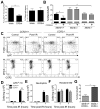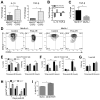MerTK Cleavage on Resident Cardiac Macrophages Compromises Repair After Myocardial Ischemia Reperfusion Injury
- PMID: 28851810
- PMCID: PMC5623080
- DOI: 10.1161/CIRCRESAHA.117.311327
MerTK Cleavage on Resident Cardiac Macrophages Compromises Repair After Myocardial Ischemia Reperfusion Injury
Abstract
Rationale: Clinical benefits of reperfusion after myocardial infarction are offset by maladaptive innate immune cell function, and therapeutic interventions are lacking.
Objective: We sought to test the significance of phagocytic clearance by resident and recruited phagocytes after myocardial ischemia reperfusion.
Methods and results: In humans, we discovered that clinical reperfusion after myocardial infarction led to significant elevation of the soluble form of MerTK (myeloid-epithelial-reproductive tyrosine kinase; ie, soluble MER), a critical biomarker of compromised phagocytosis by innate macrophages. In reperfused mice, macrophage Mertk deficiency led to decreased cardiac wound debridement, increased infarct size, and depressed cardiac function, newly implicating MerTK in cardiac repair after myocardial ischemia reperfusion. More notably, Mertk(CR) mice, which are resistant to cleavage, showed significantly reduced infarct sizes and improved systolic function. In contrast to other cardiac phagocyte subsets, resident cardiac MHCIILOCCR2- (major histocompatibility complex II/C-C motif chemokine receptor type 2) macrophages expressed higher levels of MerTK and, when exposed to apoptotic cells, secreted proreparative cytokines, including transforming growth factor-β. Mertk deficiency compromised the accumulation of MHCIILO phagocytes, and this was rescued in Mertk(CR) mice. Interestingly, blockade of CCR2-dependent monocyte infiltration into the heart reduced soluble MER levels post-ischemia reperfusion.
Conclusions: Our data implicate monocyte-induced MerTK cleavage on proreparative MHCIILO cardiac macrophages as a novel contributor and therapeutic target of reperfusion injury.
Keywords: efferocytosis; inflammation; ischemia reperfusion injury; macrophage; phagocytosis.
© 2017 American Heart Association, Inc.
Figures








Similar articles
-
Enhanced efferocytosis of apoptotic cardiomyocytes through myeloid-epithelial-reproductive tyrosine kinase links acute inflammation resolution to cardiac repair after infarction.Circ Res. 2013 Sep 27;113(8):1004-12. doi: 10.1161/CIRCRESAHA.113.301198. Epub 2013 Jul 8. Circ Res. 2013. PMID: 23836795 Free PMC article.
-
Macrophage AXL receptor tyrosine kinase inflames the heart after reperfused myocardial infarction.J Clin Invest. 2021 Mar 15;131(6):e139576. doi: 10.1172/JCI139576. J Clin Invest. 2021. PMID: 33529176 Free PMC article.
-
Myeloid receptor CD36 is required for early phagocytosis of myocardial infarcts and induction of Nr4a1-dependent mechanisms of cardiac repair.FASEB J. 2018 Jan;32(1):254-264. doi: 10.1096/fj.201700450R. Epub 2017 Aug 31. FASEB J. 2018. PMID: 28860151 Free PMC article.
-
Reperfusion injury in ST-segment elevation myocardial infarction: the final frontier.Coron Artery Dis. 2017 May;28(3):253-262. doi: 10.1097/MCA.0000000000000468. Coron Artery Dis. 2017. PMID: 28072597 Review.
-
Innate immunity as a target for acute cardioprotection.Cardiovasc Res. 2019 Jun 1;115(7):1131-1142. doi: 10.1093/cvr/cvy304. Cardiovasc Res. 2019. PMID: 30576455 Free PMC article. Review.
Cited by
-
Haematopoietic and cardiac GPR55 synchronize post-myocardial infarction remodelling.Sci Rep. 2021 Jul 13;11(1):14385. doi: 10.1038/s41598-021-93755-y. Sci Rep. 2021. PMID: 34257332 Free PMC article.
-
Anti-Inflammatory Neutrophils Reprogram Macrophages toward a Pro-Healing Phenotype with Increased Efferocytosis Capacity.Cells. 2024 Jan 23;13(3):208. doi: 10.3390/cells13030208. Cells. 2024. PMID: 38334600 Free PMC article.
-
Cardiomyocyte-specific Piezo1 deficiency mitigates ischemia-reperfusion injury by preserving mitochondrial homeostasis.Redox Biol. 2025 Feb;79:103471. doi: 10.1016/j.redox.2024.103471. Epub 2024 Dec 27. Redox Biol. 2025. PMID: 39740362 Free PMC article.
-
Immune cells as targets for cardioprotection: new players and novel therapeutic opportunities.Cardiovasc Res. 2019 Jun 1;115(7):1117-1130. doi: 10.1093/cvr/cvz050. Cardiovasc Res. 2019. PMID: 30825305 Free PMC article. Review.
-
IL-13 promotes functional recovery after myocardial infarction via direct signaling to macrophages.JCI Insight. 2024 Jan 23;9(2):e172702. doi: 10.1172/jci.insight.172702. JCI Insight. 2024. PMID: 38051583 Free PMC article.
References
-
- Whelan RS, Kaplinskiy V, Kitsis RN. Cell death in the pathogenesis of heart disease: Mechanisms and significance. Annu Rev Physiol. 2010;72:19–44. - PubMed
-
- Howangyin KY, Zlatanova I, Pinto C, Ngkelo A, Cochain C, Rouanet M, Vilar J, Lemitre M, Stockmann C, Fleischmann BK, Mallat Z, Silvestre JS. Myeloid-epithelial-reproductive receptor tyrosine kinase and milk fat globule epidermal growth factor 8 coordinately improve remodeling after myocardial infarction via local delivery of vascular endothelial growth factor. Circulation. 2016;133:826–839. - PMC - PubMed
-
- Wan E, Yeap XY, Dehn S, Terry R, Novak M, Zhang S, Iwata S, Han X, Homma S, Drosatos K, Lomasney J, Engman DM, Miller SD, Vaughan DE, Morrow JP, Kishore R, Thorp EB. Enhanced efferocytosis of apoptotic cardiomyocytes through myeloid-epithelial-reproductive tyrosine kinase links acute inflammation resolution to cardiac repair after infarction. Circulation research. 2013;113:1004–1012. - PMC - PubMed
MeSH terms
Substances
Grants and funding
LinkOut - more resources
Full Text Sources
Other Literature Sources
Molecular Biology Databases
Miscellaneous

